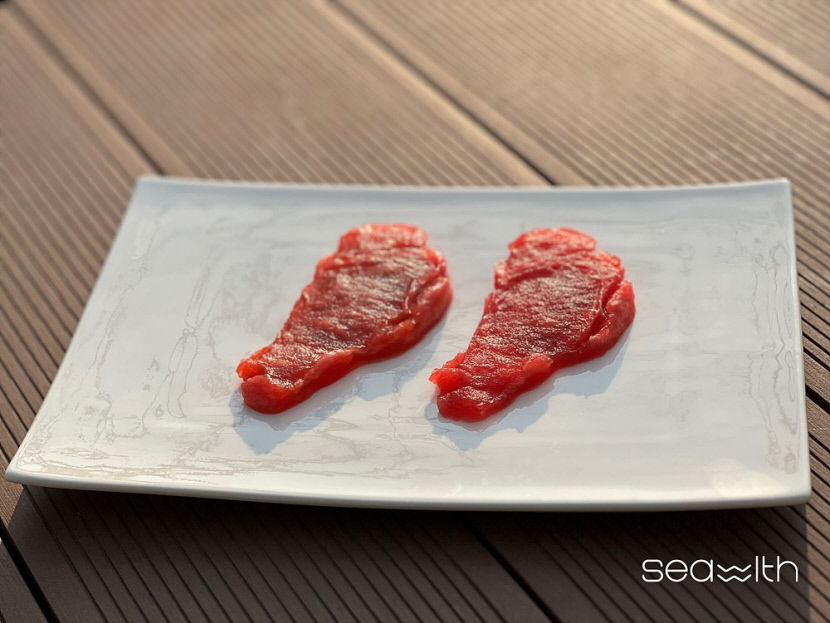

Steakholder Foods adds plant-based shrimp to expanding range of 3D-printed seafood and analogues
Steakholder Foods has announced that it has further expanded its 3D-printing capabilities with the world's first plant-based, 3D-printed shrimps, expertly designed to mimic the authentic texture and flavor of conventional shrimps.
The shrimps were precision-printed on Steakholder Foods' proprietary DropJet printer, designed for fish and seafood printing, using shrimp-flavored ink developed by Steakholder Foods' food technology team. It is the latest addition to the company's portfolio of printed seafood products to be offered to potential customers, on a plant (analogue) or potentially hybrid (combination plant and cultivated) basis, as economies of scale develop to enable price-competitive cell development.
The shrimp market is worth more than US$60 billion, and is projected to continue growing substantially over the coming decade. With 7.6 million tons of shrimp harvested in 2023, Steakholder Foods' heavy-duty production printing solution aims to provide partners and customers with the means to meet growing demand through high-volume, efficient, and sustainable production, offering a practical and environmentally-friendly alternative to traditional shrimp farming.
"By unveiling a second new species of plant-based, 3D-printed seafood this month, we expect to position Steakholder Foods to sell and deliver its first DropJet printer in 2024, offering partners and customers a unique opportunity to benefit from the expanding global seafood market, while making the right kind of impact on the environment," commented Arik Kaufman, CEO of Steakholder Foods.
Earlier in the month, the Israeli food-tech announced the launch of the world’s first plant-based, 3D-printed eel. The company’s eel is currently based on plant materials, and is expected to include cultivated eel cells in the future, as economies of scale allow price-competitive cell development.
The global eel market, valued at US$4.3 billion in 2022 and growing at a CAGR of 2.19%, primarily relies on wild eel. This industry faces several critical challenges, including overexploitation and the risk of extinction, particularly in Japan which accounts for a major portion of global eel consumption. Breeding difficulties in farms due to the complex life cycle of eels, regulatory challenges, and issues like poaching and black-market trading further exacerbate the situation, highlighting the need for sustainable alternatives.
If you have any questions or would like to get in touch with us, please email info@futureofproteinproduction.com






